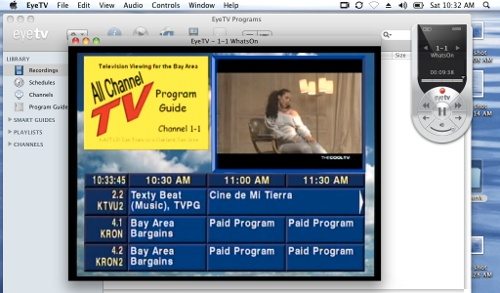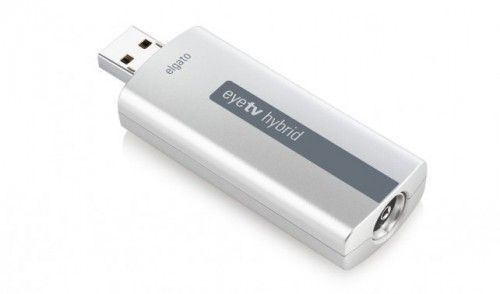고정 헤더 영역
상세 컨텐츠
본문
Go to Start / Control Panel / Administrative Tools / Computer Management / Disk Management and see if your D drive is listed there. If so, hover your mouse over the D drive icon until a text message appears and then copy down that message EXACT as it readsin the order presented and post it here. It not, it really isn't being recognized.Go to Start / Control Panel / Device Manerer and look for your D drive there.

If you find it then double lick on it to show more details. Does it say that it's working properly? If it doesn't show up there then the system doesn't even have device driversfor it.Is your D drive a hard disk drive or partition or a CD/DVD drive or what? What is the manufactuer, make, and model or your computer and for D drive?Try removing the D drive and unpludding and replugging in the connections to see if that might be the problem.Do you know when this problem began? Try a System Restore to a point in timeBEFORE the problem began.
Here's the procedure:.Be sure to check the box to show more than 5 days of restore points. If the first attempt fails, then try an earlier point or two. NOTE: You will have to re-install any software and updates you installed between now and the restore point, but you can useWindows Update for the updates.
Eyetv For Windows 10
Use the recovery disk if the system prompt doesn’t work. The recovery disk works a bit different from the above procedures but if you follow the prompts from the System Restore menu option with the above informationyou should be able to restore with no problems.If the System Restore doesn't work, do a Startup Repair by booting to the genuine Windows Vista Installation Disk (or one you can borrow from ANYONE) or from a Recovery Disk. Here's the procedure. To boot to the CD you may need to change the BIOS to make the CD-drive first in theboot sequence. To do that, wait for the screen that tells you the F key to push to access the boot menu or boot setup. Push it quickly. Make the changes, save your work, and exit.
Put the CD in the drive and reboot. When prompted, push any key to bootfrom the CD.If you don't have either disk, you can make a bootable Recovery Disk using along with burning software like:and, of course, a blank CD.If that doesn't work, try to boot into safe mode (repeatedly click the F8 key while booting and go to safe mode with networking – or do so from the command prompt on the disk). Then let's check some of your system files:Go to Start / All Programs / Accessories / Command prompt and right click on command prompt and click run as Administrator (you can skip this step if using the disk).If using the disk, cd to C:WindowsSystem32. Type sfc /scannow and enter and let it run.
It will scan and try to fix some of your system files. Hopefully it will complete with no corruption it could not repair (if there is such corruption post back hereor try to analyze it to find the problem file(s) using. Try to post any corrupted files here so we can see if they can berepaired with good copies from the installation disk (unless there are too many).While in Command Prompt, type chkdsk /f /r and enter and let it run. It will want to schedule itself to run at the next restart.
Answer yes and then reboot to run the program. It will scan and try to fix any corruption or bad sectors on your hard driveand mostly remove that as a potential cause.If that doesn't work, then please post any repeating error messages from the Event Viewer concerning drive missing (Start / Control Panel / Administrative Tools / Event Viewer – or typing eventvwr from the command prompt starting from C:WindowsSystem32).Here's how to use Event Viewer:.
Look in the System section.You may be infected with malware. Try to run anti-malware programs (in safe mode with networking ifnecessary). To fix this problem (if it is a problem) download, install, and run the following two programs:and. You may also want to try a free trial of Pandasoft ( ).Before downloading pandasoft, uninstall whatever anti-virus program you are currently using (because installing and running two at the same time can cause conflicts, freezes, and all sorts of problems). Once you've uninstalled your current AV program, download,install, update, and scan using Pandasoft. I think you might be amazed at how much it finds that the other software missed. Once complete, uninstall pandasoft and re-install your current AV program (unless you decide to switch which I did when I first triedit about 4 years ago).
You may also want to try the new, free Microsoft Security Essentials(with thesame caveat that only ONE AV program can be installed and running on your system at any one time). You may also want to try the free Avira at:and Avast at. Reboot after completing all the scans. You may also want to try the free OneCare atand let it run all the options (except the registry cleaner) because that’s good maintenance (itwill take some time to complete but can be done in the background).If that doesn't work, try a clean boot. If the problem goes away then it's just a matter of tracking down the culprit causing the problem. Follow the procedures in the article.
Once found, delete, remove, deactivate, or uninstall it. Oncedone be sure to reset Vista back to normal status as explained in the procedures. If the problem occurs in clean mode then just restore the system to normal status and reboot - this solution is not going to work.Boot into Safe mode with networking and see if the problem occurs there.
Either result helps us narrow down the search for the cause.You may be having troubles with your device drivers. Go to Device Manager by going tostart / search box and type device manager and enter and then double-click on the program icon that appears. Check each device for a red x, yellow!or white?
Eyetv Hybrid On Windows

These identify devices with problems (probably drivers, but also conflicts or something else). Click on each for further details and troubleshooting tips. If you need to get drivers (and you need then for for D drive at least and any othersyou have time to do - they may help in ways beyond just resolving this problem), do so from the computer vendor or device manufacturer (NOT from Microsoft Updates). In fact, you should turn off automatic driver updates from Windows Update as follows.Proceed as follows to get the drivers:. Once you have thedrivers, you can install them through Device Manager as follows:.If that doesn't work, we'll need to do a system repair/upgrade using the genuine Windows Vista Installation Disk (one you own or one you can borrow from ANYONE). Here's the procedure. Although this will not affect your data, settings, orprograms, you should still backup your data before starting just to be on the safe side.
You may have a lot of updates to re-install (including any service packs you had to remove). If the version on the system came with SP1 or SP2 pre-installed and the diskis an earlier version, then you'll need to make a slipstream disk as follows:.Hopefully one of these procedures will resolve or at least identify the cause of your problem. If not, post back with results from what you tried and copies of some of the scans and we'll try something else. Post back in any case so we'll know how it turnedout.Good luck!Lorien - MCSE/MCSA/Network+/A+ - If this post helps to resolve your issue, please click the 'Mark as Answer' or 'Helpful' button at the top of this message. By marking a post as Answered, or Helpful you help others find the answer faster.




